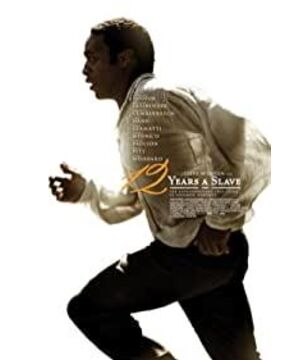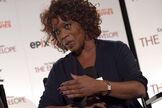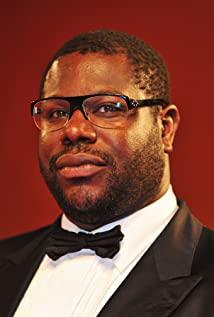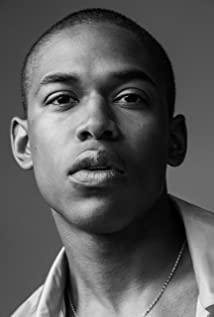Putting aside other things, but McQueen's delicate and complex visual language in "Twelve Years as a Slave", I think it is worth a little golden man. The first shot of the movie is a close-up of the field, and then a row of black slaves who are waiting lifelessly for the master's training are cut straight, and then there is repeated labor. Similar shots appear repeatedly in the film. The background of the times, slaves The repression of human nature, the exploitation of freedom, and the attributes of commodities are exposed through a few shots; the mutual comfort with the female slaves around at night, and the warmth of the bed with his wife, a situation that seems to be familiar but completely different, triggers the male protagonist. Past memories of family and freedom.
In this half-flashback and half-interruption method, the film tells the story of the male protagonist being kidnapped by criminals from free blacks, and eventually sold to the southern United States as slaves, until the two timelines intersect. However, the narrative logic is completely similar or contrasted in the lens, which connects a clue from the perspective, psychological and emotional development of the male protagonist. Each experience is a montage of memory fragments, from close-ups of still lifes or scenery, giving time and background clues, and then transitioning to detailed depictions of character behavior and language. Various symbols, analogies, suggestive techniques, as well as depth of field control, and the psychological portrayal of half-length close-ups of characters, which McQueen is best at, almost omit all the assistive descriptions of the text and language commonly used in biopics, bringing the advantages of visual images And play to its extreme. What I personally appreciate most is a long-shot facial close-up before the end. The actor is completely immersed in self-consciousness, and all psychological activities are left blank to the audience's imagination. But after the actor's hope and trust have been crushed time and time again, the uncertainty about the future of the fate can be captured, and he unconsciously seeks hope in despair, but he is afraid of the complexity and indescribable disappointment.
In addition to the language of images, interspersed ballads are another important medium for the director to express the atmosphere and emotions. Soon after the opening, the impression was particularly deep. Paul Dano’s joking and satirical singing when admonishing black slaves was interspersed with scenes of slaves’ labor, directly reflecting the film’s suppressed emotions and the attitude of naked disclosure; and in the field of exhaustion. At the funeral of his companion, the male protagonist’s emotional chanting loudly is a kind of release that has been suppressed for too long, an emotional climax.
Unlike the predecessors, "Hunger" and "Shame", which focused on the small pattern of the characters, the hero’s own unfortunate experience is the focus of the film, but he also acts as an observer. The director uses what he sees as a medium to go. Delineate the faces of all living beings in a special era—comrades of slaves who try to resist but are rare to save, mothers of black slaves who are heartbroken, black girls who are unbearably humiliated and eager for liberation, and slave owners who are benevolent or pathologically cruel— -In order to show the weakness, indifference, pathology and cruelty of human nature under slavery, of course, there is also warmth and truthfulness. Through the scheduling and control of the exquisite film language, McQueen has successfully mastered this kind of small biographies with epic attributes of the big era, and completed the promotion from independent sketches to large-scale themes, which can be said to be a major milestone in his guiding career. The only regret is that the subject still remains on the specific characterization and analysis he is familiar with, lacking a bit of deeper and more extensive excavation and sublimation.
In terms of performance, the characters of the movie and the material of the story determine that Oliver Lawrence Award winner Chiwetel Ejiofor has enough room for display. The main line perspective of the storyteller and observer similar to Forest Whitaker, the protagonist is not the 100% focus of the movie, but although the performance has always been maintained at a high level, the supporting role robbed a lot of attention in the middle. Fortunately, it has more room for tension and explosive power than Whitaker, especially the shock and resentment after being kidnapped, and the physical torture under resistance, which gave the audience an emotional and visual shock from the beginning of the film. .
The role of Uncle Fa is a classic villain, a mentally distorted and pathologically cruel slave owner, but he was performed enough to get into the woods. I remember a scene in which he was drunk and chased the male protagonist but was tripped and vomited by the fence. The audience Unconsciously responded with applause. The most difficult thing is his complex emotions towards the black female slave he bullied, the entanglement of stubborn and perverted possessiveness and sadism, and the implied compassion and love under the anger and cruelty, which can be expressed by Fassbender with great tension. And the limitation of the role and the control of the intensity make his performance not overwhelming. It is indeed a typical strong supporting role and an excellent opportunity to win prizes.
The performance of the newcomer girl Lupita Nyong'o is the biggest surprise. There are not many roles, but each key scene is enough to attract attention. Between the bullying of the slave owner played by Uncle Fa and the jealousy and hatred of his wife, she tolerated survival, struggling in the yearning for freedom and despair of life. The complexity and particularity of the role brought great challenges to her performance. , But also showed her talent, and the rookie's seat should be available.
View more about 12 Years a Slave reviews











